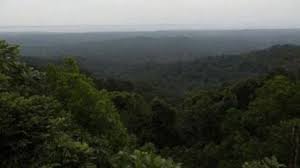Over 1.73 lakh hectares of forest land diverted from in 10 years; 63% for mining, irrigation and roads: Centre tells Lok Sabha

Over the last decade, India has diverted 1,73,050 hectares of forest land for non-forest use. The central government shared this figure in the Lok Sabha on Monday. According to the data, about 63% of this land went to mining, irrigation, and road projects.
Union Environment Minister Bhupender Yadav gave this information in response to a question in Parliament. The forest land was diverted under the Forest (Conservation) Act, 1980, which allows such use with proper approvals and conditions.
Mining and Infrastructure Projects Drive Land Use
Mining topped the list of reasons behind forest land diversion. Many industrial areas need minerals, and this demand often comes at the cost of forest ecosystems.
Irrigation and road construction followed closely. The government also allowed forest land for defense, power lines, railways, and other infrastructure.
Officials claimed that all clearances followed due process. They said experts assessed environmental impacts before granting approvals. Still, critics believe many approvals bypassed thorough scrutiny or ignored the local ecological risks.
Central India Faces Heavy Impact
Though the response didn’t include state-wise data, previous reports show high diversion in states like Chhattisgarh, Odisha, Madhya Pradesh, and Jharkhand. These states have rich forests and also large mineral deposits.
In many tribal regions, the diverted land once supported forest-dwelling communities. These groups now face threats to their way of life and access to natural resources.
Experts Raise Red Flags
Environmentalists are deeply concerned. Forests support wildlife, regulate the climate, and help store carbon. When forests vanish, so do these benefits.
A senior member from the Centre for Science and Environment said, “Every hectare lost weakens our defense against climate change.” Conservationists added that compensatory planting often fails to restore the complex biodiversity of natural forests.
In some cases, trees are planted far from the original site. In others, plantations use unsuitable species or don’t survive long. These issues reduce the success of restoration efforts.
Government Explains Its Position
The environment ministry said that development and conservation must go together. Minister Yadav explained that no land was diverted without a full evaluation.
He added that every approved project must follow strict rules. These include compensatory afforestation, payment of Net Present Value (NPV), and wildlife management plans if needed.
The minister stressed that authorities always look for alternatives before approving projects on forest land. He said the government also monitors whether companies meet environmental conditions after receiving approval.
Struggle Between Growth and Green Cover
The rising demand for roads, mines, and infrastructure reflects India’s push for fast development. But this growth model often places forests at risk.
Experts urge better planning to reduce dependence on forest land. They also call for stronger laws and more public participation in decision-making. Without these checks, they fear that India’s forests will keep shrinking, making long-term damage harder to reverse.
What Lies Ahead?
India has promised to bring 33% of its land under green cover. Yet, large-scale diversions and poor afforestation results cast doubt on that goal.
As climate events become more extreme, experts believe it’s time to rethink forest policies. They call for better project assessments, more transparency, and a stronger focus on nature-based solutions.
India’s challenge is clear: How can the country grow without sacrificing its forests? The answer may lie in smart planning, better use of degraded lands, and real efforts to protect remaining forest cover.






